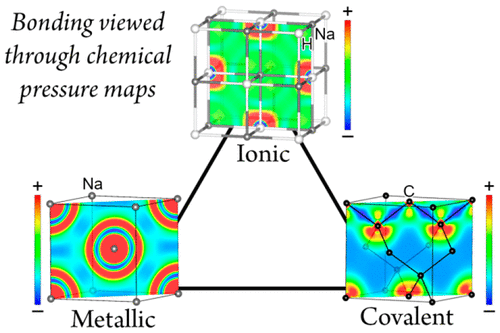当前位置:
X-MOL 学术
›
J. Chem. Theory Comput.
›
论文详情
Our official English website, www.x-mol.net, welcomes your feedback! (Note: you will need to create a separate account there.)
Chemical Pressure Maps of Molecules and Materials: Merging the Visual and Physical in Bonding Analysis
Journal of Chemical Theory and Computation ( IF 5.5 ) Pub Date : 2017-12-26 00:00:00 , DOI: 10.1021/acs.jctc.7b00943 Hussien H. Osman 1, 2 , Miguel A. Salvadó 1 , Pilar Pertierra 1 , Joshua Engelkemier 3 , Daniel C. Fredrickson 3 , J. Manuel Recio 1, 3
Journal of Chemical Theory and Computation ( IF 5.5 ) Pub Date : 2017-12-26 00:00:00 , DOI: 10.1021/acs.jctc.7b00943 Hussien H. Osman 1, 2 , Miguel A. Salvadó 1 , Pilar Pertierra 1 , Joshua Engelkemier 3 , Daniel C. Fredrickson 3 , J. Manuel Recio 1, 3
Affiliation

|
The characterization of bonding interactions in molecules and materials is one of the major applications of quantum mechanical calculations. Numerous schemes have been devised to identify and visualize chemical bonds, including the electron localization function, quantum theory of atoms in molecules, and natural bond orbital analysis, whereas the energetics of bond formation are generally analyzed in qualitative terms through various forms of energy partitioning schemes. In this Article, we illustrate how the chemical pressure (CP) approach recently developed for analyzing atomic size effects in solid state compounds provides a basis for merging these two approaches, in which bonds are revealed through the forces of attraction and repulsion acting between the atoms. Using a series of model systems that include simple molecules (H2, CO2, and S8), extended structures (graphene and diamond), and systems exhibiting intermolecular interactions (ice and graphite), as well as simple representatives of metallic and ionic bonding (Na and NaH, respectively), we show how CP maps can differentiate a range of bonding phenomena. The approach also allows for the partitioning of the potential and kinetic contributions to the interatomic interactions, yielding schemes that capture the physical model for the chemical bond offered by Ruedenberg and co-workers.
中文翻译:

分子和材料的化学压力图:结合分析中的视觉和物理
分子和材料中键相互作用的表征是量子力学计算的主要应用之一。已经设计出许多方案来鉴定和可视化化学键,包括电子定位功能,分子中原子的量子理论和自然键轨道分析,而通常通过各种形式的能量分配方案以定性方式分析键形成的能级。 。在本文中,我们说明了最近开发的用于分析固态化合物中原子尺寸效应的化学压力(CP)方法如何为合并这两种方法提供了基础,其中通过原子之间的吸引和排斥力揭示了键。使用一系列包含简单分子的模型系统(H2,CO 2和S 8),扩展结构(石墨烯和金刚石)和表现出分子间相互作用的系统(冰和石墨)以及金属和离子键的简单代表(分别为Na和NaH),我们展示了如何CP映射可以区分一系列键合现象。该方法还允许分配对原子间相互作用的潜在和动力学贡献,从而产生捕获Ruedenberg及其同事提供的化学键物理模型的方案。
更新日期:2017-12-26
中文翻译:

分子和材料的化学压力图:结合分析中的视觉和物理
分子和材料中键相互作用的表征是量子力学计算的主要应用之一。已经设计出许多方案来鉴定和可视化化学键,包括电子定位功能,分子中原子的量子理论和自然键轨道分析,而通常通过各种形式的能量分配方案以定性方式分析键形成的能级。 。在本文中,我们说明了最近开发的用于分析固态化合物中原子尺寸效应的化学压力(CP)方法如何为合并这两种方法提供了基础,其中通过原子之间的吸引和排斥力揭示了键。使用一系列包含简单分子的模型系统(H2,CO 2和S 8),扩展结构(石墨烯和金刚石)和表现出分子间相互作用的系统(冰和石墨)以及金属和离子键的简单代表(分别为Na和NaH),我们展示了如何CP映射可以区分一系列键合现象。该方法还允许分配对原子间相互作用的潜在和动力学贡献,从而产生捕获Ruedenberg及其同事提供的化学键物理模型的方案。



























 京公网安备 11010802027423号
京公网安备 11010802027423号